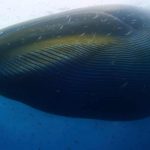Source: Business Newswire
Today, NOAA Fisheries issued final regulations to protect more than 140,000 square miles of seafloor habitat off the U.S. West Coast from destructive bottom trawling. Places protected include corals, sponges, rocky reefs and other important areas for marine life and ocean ecosystems. These safeguards for the living seafloor are in response to a vote by the Pacific Fishery Management Council in April 2018 — following years of scientific input and advocacy by Oceana — to more than double the spatial extent of seafloor protections off California, Oregon and Washington from the impacts of bottom trawl fishing gear. Once the new regulations take effect on January 1, 2020, 90 percent of the seafloor in U.S. ocean waters off the West Coast will be off limits to bottom trawling.
Continue reading here.










